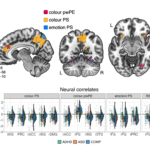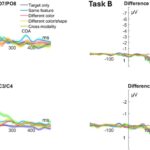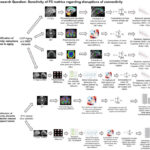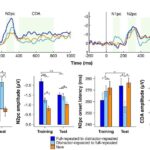It is possible to improve attentional guidance by learning statistical regularities of the static spatial layout of the target and distractors within the search display. However, there is still controversy surrounding whether statistical learning can be applied to dynamic regularities governing the placement of targets and distractors on successive trials. To investigate this, Yu and colleagues (2023) conducted two experiments where we applied a one-step shift of the critical item in either a clockwise or counterclockwise direction to either the target or a distractor (see figure below). Our findings showed that there was robust learning of the predicted target location, resulting in easier processing of the target at that specific location compared to random target placement. However, there was little evidence of proactive suppression of the predictable distractor location, in contrast to the finding of Wang et al. (2021). Interestingly, a recent study also concurs with our findings, indicating that there is no evidence for spatial suppression due to across-trial distractor learning (Li et al., 2023).

References
- Yu, H., Allenmark, F., Müller, H. J., & Shi, Z. (2023). Asymmetric learning of dynamic spatial regularities in visual search: Robust facilitation of predictable target locations, fragile suppression of distractor locations. Journal of Experimental Psychology: Human Perception and Performance, 49(5), 709–724. https://doi.org/10.1037/xhp0001120
- Wang, L., Wang, B., & Theeuwes, J. (2021). Across-trial spatial suppression in visual search. Attention, Perception & Psychophysics. https://doi.org/10.3758/s13414-021-02341-x
- Li, A.-S., Bogaerts, L., & Theeuwes, J. (2023). No evidence for spatial suppression due to across-trial distractor learning in visual search. Attention, Perception & Psychophysics. https://doi.org/10.3758/s13414-023-02667-8





